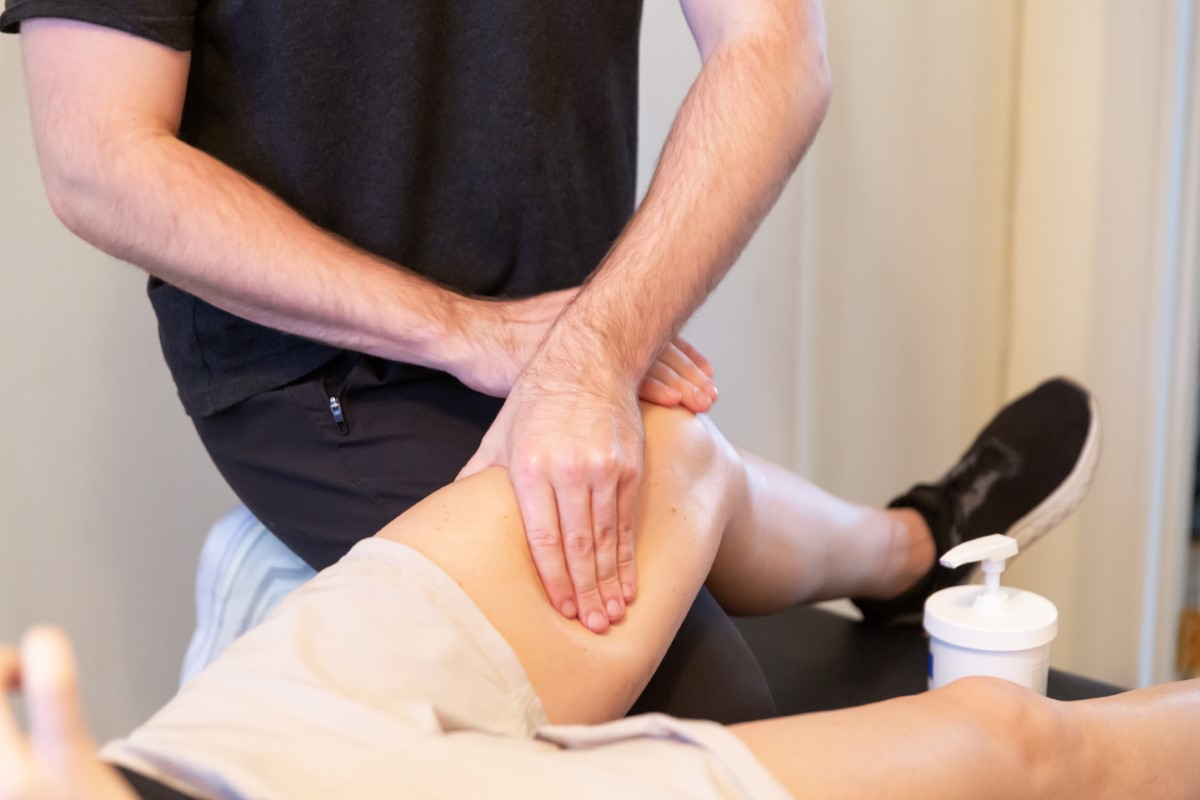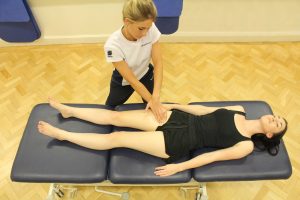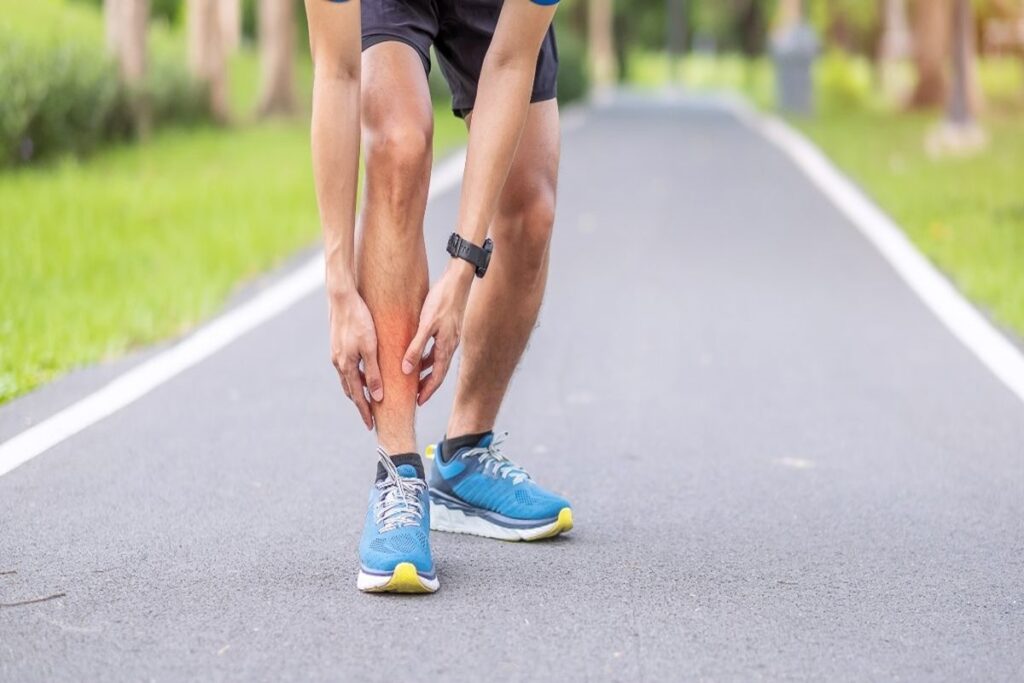Undergoing a total knee replacement (TKR) is a significant step toward regaining mobility, reducing knee pain, and improving quality of life. This procedure, often recommended for those with severe arthritis, knee problems, or joint degeneration, replaces the damaged knee joint with an artificial implant. However, the surgery itself is only part of the journey—rehabilitation and …
Best Physical Therapy Exercises After Knee Replacement Surgery

Undergoing a total knee replacement (TKR) is a significant step toward regaining mobility, reducing knee pain, and improving quality of life. This procedure, often recommended for those with severe arthritis, knee problems, or joint degeneration, replaces the damaged knee joint with an artificial implant. However, the surgery itself is only part of the journey—rehabilitation and recovery through physical therapy after knee surgery are essential for restoring strength, flexibility, and function. A structured physical therapy program helps patients improve range of motion, rebuild muscle strength, and prevent complications to ensure a successful long-term outcome.
A well-structured physical therapy treatment program helps patients regain their range of motion, rebuild muscle strength, and prevent complications like excessive scar tissue formation. By engaging in physical therapy exercises after knee surgery, individuals can enhance blood flow, prevent stiffness, and return to an active life. In this guide, we’ll explore when to start therapy, the phases of rehabilitation, effective exercises, and how to ensure a successful recovery.
When to Start Physical Therapy After Knee Replacement Surgery
Physical therapy after knee surgery typically begins within hours of the procedure. Early movement is crucial in preventing stiffness, blood clots, and excessive swelling. A structured exercise and activity program ensures a safe recovery and long-term mobility improvements.
Key Recovery Milestones:
- Day of Surgery: Initial range-of-motion exercises and assisted movements begin under medical supervision.
- 1 to 3 Days Post-Surgery: Patients start inpatient physical therapy, including ankle pumps, knee straightening exercises, and assisted walking with a walker or crutches.
- 2 to 3 Weeks Post-Surgery: Home-based exercise routines focus on leg extensions, quadriceps exercises, and gentle functional exercises to improve stability.
- Up to 4 Months Post-Surgery: Outpatient therapy introduces advanced exercises and activities like resistance exercises, stair climbing, and step-ups to enhance strength rebuilding and balance improvement.
Starting therapy early is essential for maintaining flexibility, preventing excessive scar tissue adhesions, and ensuring proper knee joint restoration.
The Three Phases of PT During Recovery
Total knee replacement surgery is a common procedure designed to restore mobility, reduce knee pain, and improve joint function. Each year, approximately 790,000 total knee replacement procedures are performed in the United States, making it one of the most common orthopaedic surgeries. While the surgery itself is a significant step toward recovery, a well-structured physical therapy treatment program is crucial for ensuring a successful outcome.
Rehabilitation occurs in three key phases: initial movement and range-of-motion exercises in the hospital, home-based physical therapy exercises, and outpatient therapy for progressive strength rebuilding. Following this structured recovery plan helps prevent scar tissue formation, joint stiffness, and post-surgical discomfort, allowing patients to return to an active life.
In the Hospital (1 to 3 Days After Surgery)
During this phase, the goal is to prevent complications and begin gentle movement. Patients work with a physical therapist to perform ankle pumps, heel slides, bed-supported knee bends, and sitting supported knee bends to prevent blood clots and increase circulation and range of motion. Applying ice and elevating your leg help reduce post-surgical discomfort and swelling.
At Home (2 to 3 Weeks After Surgery)
After hospital discharge, home therapy focuses on improving mobility, range of motion, and muscle strength. Patients engage in quadriceps exercises, knee straightening exercises, and leg extensions to rebuild strength. Balance exercises such as step-ups and wall squats are introduced to enhance knee stability.
Outpatient Therapy (Up to 4 Months After Surgery)
Outpatient therapy introduces a supervised exercise program tailored to exercise progression and rehabilitation goals. Exercises such as stationary bike riding, step-downs, resistance training, and weight-bearing activities help improve endurance and restore normal walking gait.
Benefits of Physical Therapy After Knee Replacement Surgery

Engaging in physical therapy after knee surgery provides long-term benefits, including restoring mobility, improving strength, and preventing complications. Patients who commit to a supervised exercise program under the guidance of a physical therapist recover faster and experience fewer mobility issues.
Studies have shown that patients who actively participate in a structured physical therapy program experience significantly better physical function within three to four months compared to those who receive minimal physiotherapy. Engaging in guided rehabilitation exercises helps improve strength, flexibility, and mobility, ultimately accelerating recovery and enhancing long-term joint function.
A well-planned exercise routine, including range-of-motion exercises, strength rebuilding, and functional movement drills, ensures that individuals can regain their independence and return to daily activities, lower-impact sports, and cardiovascular exercise with confidence.
4 Physical Therapy Exercises for Knee Replacement Recovery
A structured knee strengthening exercises routine is essential for regaining mobility, strength, and flexibility after total knee replacement surgery. These physical therapy exercises after knee surgery help improve range of motion, reduce stiffness, and prevent scar tissue formation. By incorporating gradual exercise progression, patients can safely rebuild muscle strength and endurance while enhancing joint stability.
1. Extending
Fully extending the knee is a crucial step in post-surgical rehabilitation to prevent long-term stiffness and scar tissue adhesions. Knee straightening exercises not only enhance range of motion and flexibility movements but also help in regaining proper walking gait. Patients should perform these exercises consistently to restore knee joint function and prevent mobility restrictions.
2. Squatting
Squatting exercises are essential for rebuilding lower body strength and endurance after knee replacement surgery. Strengthening the quadriceps, hamstrings, and glutes ensures better weight distribution and joint stability, reducing the risk of falls and knee pain. Patients progress from wall squats to deeper squats, gradually increasing intensity while maintaining proper balance and control.
3. Stepping
Step-ups and step-downs play a key role in functional recovery, allowing patients to regain confidence in daily activities like climbing stairs, walking on uneven surfaces, and standing from a seated position. These exercises improve balance improvement, coordination, and joint flexibility, reducing strain on the knee joint. Over time, resistance exercises and increased step height can further enhance strength and mobility.
4. Stretching
Regular stretching exercises help maintain a full range of motion while preventing muscle tightness and stiffness. Incorporating step flexion stretches, leg extensions, and flexibility movements into a supervised exercise program promotes better knee alignment and joint mobility. Stretching also reduces tension increase and post-surgical discomfort, ensuring a smoother and faster recovery process.
Additional Early-Stage Exercises for Knee Replacement Recovery
During the early phases of rehabilitation and recovery, gentle exercises help reduce swelling, improve circulation, and restore knee mobility. These low-impact movements target the quadriceps, calf and shin muscles, and hip extensors, supporting overall knee joint restoration. Engaging in these foundational exercises ensures a safe and steady return to normal function, preventing stiffness and mobility limitations.
Quadriceps Sets
Quadriceps sets are a foundational knee strengthening exercise that activates the quadriceps muscles without placing excessive strain on the knee joint. By holding a muscle contraction, this exercise improves knee stability and strength rebuilding, which is essential for supporting proper walking gait and mobility. Consistently practicing quadriceps exercises helps prevent muscle atrophy and enhances post-surgical recovery..
Straight Leg Raises
Performing straight leg raises helps improve muscle strength and endurance, particularly in the quadriceps and hip flexors. Adding ankle weights gradually increases resistance, further enhancing joint stability and knee alignment. This exercise is vital for preventing stiffness, improving range of motion, and ensuring better leg control during recovery.
Ankle Pumps
Ankle pumps play a crucial role in blood flow circulation and swelling reduction after knee replacement surgery. This simple yet effective movement prevents blood clots, reduces post-surgical discomfort, and enhances overall circulation in the lower extremities. Regularly performing ankle pumps is especially important during the early recovery phase to promote healing and mobility.
Knee Straightening Exercises
Practicing knee straightening exercises improves range of motion, flexibility, and mobility while helping to prevent scar tissue adhesions. These exercises enhance quadriceps activation, allowing for better knee joint restoration and functional movement. Gradual exercise progression ensures patients can fully extend their knee without strain or discomfort.
Bed-Supported Knee Bends
Bed-supported knee bends are an essential range-of-motion exercise that helps patients regain knee flexibility while reducing muscle tension. This movement is particularly beneficial for those in the early stages of rehabilitation and recovery, as it encourages gentle mobility without excessive strain on the knee joint. Over time, increasing the bend depth helps restore functional movement patterns.
Sitting Supported Knee Bends
Sitting supported knee bends promote active movement, flexibility, and strength rebuilding in the knee joint. By using a chair or stable surface, patients can comfortably bend their knee, improving mobility and reducing stiffness. This exercise is crucial for regaining independence in daily activities such as standing, walking, and climbing stairs.
Tips for Safe and Effective Recovery

Recovering from total knee replacement surgery requires patience, consistency, and proper exercise progression. To ensure a safe and effective recovery, it’s important to follow your physical therapist’s recommendations and make gradual adjustments to your rehabilitation and recovery plan.
- Follow a supervised exercise program to avoid injuries.
- Avoid a high-impact routine until approved by your orthopaedic surgeon.
- Use assistive devices (walker or crutches) until balance improves.
- Stay consistent with physical therapy sessions for optimal rehabilitation and recovery.
- Practice positive thinking—mental well-being is crucial for physical healing.
When to Seek Help from a Physical Therapist
While post-surgical discomfort is normal, persistent or worsening symptoms may indicate complications that require professional attention. Seeking help from a physical therapist can ensure proper modifications to your exercise routine, preventing setbacks and enhancing recovery time.
Consult a physical therapist if you experience:
- Severe swelling or persistent knee pain that worsens over time.
- Limited range of motion despite following your exercise routine.
- Difficulty walking or regaining mobility even after physical therapy treatment.
- Signs of infection, incision pain, or abnormal scar tissue adhesions.
At Sustain Physical Therapy and Performance, we provide expert rehabilitation and recovery programs designed to help individuals regain strength, mobility, and function after total knee replacement surgery. Our skilled physical therapists develop personalized exercise routines that focus on range-of-motion exercises, strength rebuilding, and balance improvement to ensure a smooth recovery process. Whether you’re looking to restore knee mobility, prevent scar tissue formation, or safely return to daily activities, our evidence-based physical therapy treatment will help you achieve long-term success.
Conclusion
Physical therapy after knee replacement surgery is essential for strength rebuilding, mobility restoration, and long-term joint function. Engaging in a progressive rehabilitation program helps prevent stiffness, excessive scar tissue, and limited range of motion. Commitment to therapy ensures that patients can return to their normal routine, participate in lower-impact sports, and enjoy an active life without knee pain.
Skipping physical therapy can lead to stiffness, muscle atrophy, and mobility issues, impacting the success of knee replacement surgery. For the best recovery outcomes, follow your physical therapist’s recommendations and stay consistent with your rehab sessions.
FAQs
How soon after knee surgery should you start physical therapy?
Physical therapy usually begins on the day of surgery or within 24 hours, starting with gentle range-of-motion exercises and assisted walking.
What is the best exercise after knee surgery?
Key exercises include quadriceps sets, knee straightening exercises, straight leg raises, and step-ups to improve strength and flexibility.
What happens if you don’t do physical therapy after knee surgery?
What happens if you don’t do physical therapy after knee surgery? Lack of therapy can lead to scar tissue adhesions, limited mobility, chronic knee pain, and difficulty walking, ultimately affecting long-term knee joint restoration.
Dr. Adam Babcock PT, DPT
“We Help Active Adults Quickly Recover From Pain Or Injury So They Can Stay Active, Get Back To What They Love To Do, and Do It For Decades”






